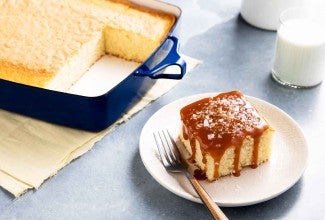Baking trials: What's the best way to prep your cake pan to prevent sticking?
We tested a dozen options. Here’s the best one.
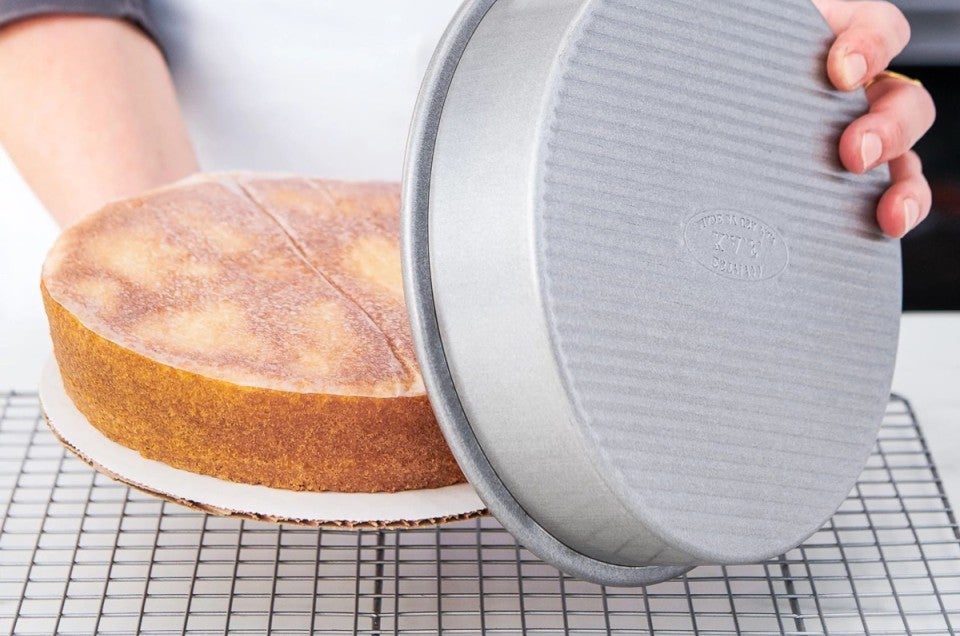

One of the most stressful moments in baking is turning your cake pan over the cooling rack and waiting to see if the cake drops out of the pan intact — or sticks partway out and crumbles. Is today’s bake going to be ecstasy … or agony?
To avoid a messy fate, we tested a number of methods and found the best way to line your pan for a stick-free guarantee.
Your goal is to prevent your cake from sticking by creating a barrier between batter and pan (e.g., parchment, nonstick spray, or shortening and flour) prior to adding cake batter.
After testing a dozen different options for this article, I’m happy to report that all but one resulted in an intact cake: no sticking, no crumbling. That said, some required a bit more tapping and jiggling to get the cake to release. Below are the methods I settled on, in order of preference, starting with my top pick for guaranteed success. Results are based on how each performed using Chef Zeb’s Hot Milk Cake in a 6" round pan (one recipe yields four 6" cakes).
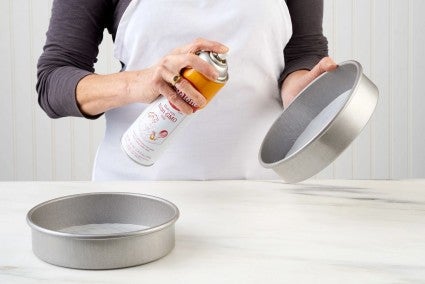
Parchment + nonstick pan spray. Silicone-coated baking paper (parchment) is the cake baker’s best friend. Line the bottom of your pan with nonstick parchment, then coat the pan’s sides with nonstick pan spray. Some people espouse coating the bottom of the pan with spray before adding the parchment, then spraying the parchment as well; if you lean toward a “belt and suspenders” approach, feel free to do this.
Baked on parchment, your cake will drop right out of the upended pan onto its cooling rack, and the parchment is easily peeled off the warm cake’s bottom. Parchment rounds are handy for round pans; if you’re baking in a square or rectangular pan, choose half-sheet parchment cut to size.
We especially recommend the parchment-pan spray combination for cakes with sticky add-ins, like meltable chips or bits of chocolate or caramel, fresh or dried fruit or anything else (mini marshmallows?) that can become sticky when warm.
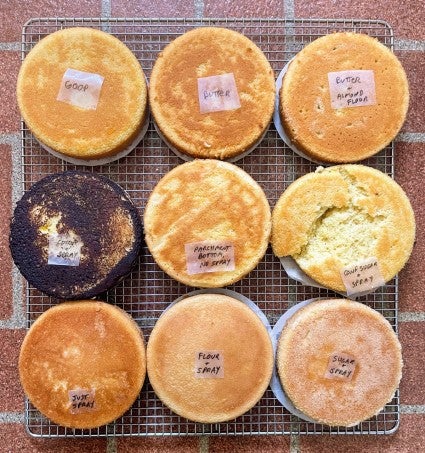
The following options yielded cakes that released from the pan intact, with only minor sticking: some crumbs left along the edge, or very thin patches of soft cake in the bottom.
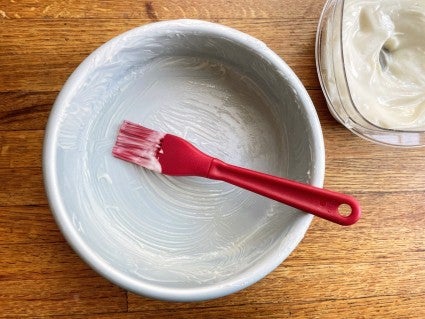
Cake goop. If you choose not to use parchment, homemade “cake goop,” known to seasoned cake bakers everywhere, is a super alternative. Made by mixing equal parts (by volume) vegetable shortening, flour, and vegetable oil, goop is simply painted onto your pans with a pastry brush (or rubbed on with a paper towel). Make up a batch* and store it in the fridge; it’ll stay spreadable and ready to use even when chilled.
*1/2 cup (92g) vegetable shortening, 1/2 cup (60g) King Arthur Unbleached All-Purpose Flour, 1/2 cup (99g) vegetable oil. Mix until smooth.
Here’s a tip: My fellow blogger, Rossi, says you can substitute cocoa powder for flour to make chocolate goop — perfect for chocolate cakes, where flour would clash visually with the cake’s rich, deep-dark color.
Nonstick pan spray, alone or dusted with flour; granulated sugar; cocoa powder, or nut flour (e.g., almond). Pan spray’s big advantage over older methods (shortening, butter) is its easy application and thorough coverage.
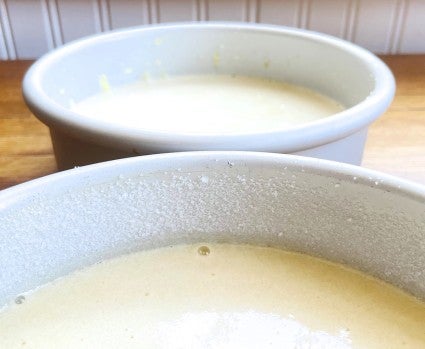
Dusting with flour is common, but you can branch out by matching the “dust” with your recipe, e.g., cocoa with chocolate cake, or almond flour for a touch of nutty flavor in yellow cake. Personally, I love to dust my spray-coated pan with granulated sugar; it adds a tiny bit of crunch and gleam to what otherwise might be a rather plain cake crust.
Vegetable shortening, alone or dusted with the options above. If you’re perfectly satisfied with this traditional method of preparing a cake pan, then stick with it (though for interest’s sake you may want to try dusting with something other than flour). Shortening’s downside: you may sometimes get a hint of oily flavor, especially if your shortening isn’t super-fresh.
Butter, alone or dusted with the options above. Butter works less well than pan spray or shortening (the milk solids in the butter add a bit of stickiness), but with some coaxing — gentle loosening, firm tapping — cakes come out with perhaps just a bit of residue left in the bottom of the pan.
Pan spray dusted with confectioners’ sugar. How about adding sweetness to your pan coating without the crunch of granulated sugar? It seemed like a good idea at the time, but apparently the cornstarch in the sugar mixed with the cake batter’s liquid and turned into glue! My experimental cake stuck badly and broke into pieces.
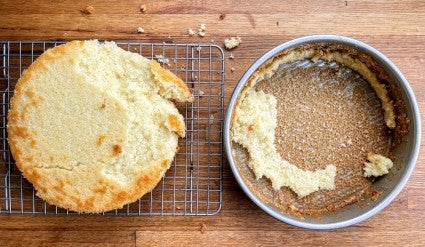
Nonstick pan without any prep. “My pan’s nonstick, so why do I need to coat it with anything?” Cake batter is inherently sticky, and as it bakes it bonds to your pan’s surface. Even a nonstick pan can only go so far to resist this. Don't be stubborn: Prep even your nonstick cake pan.
If you use a nonstick cake pan — a 9” round, 8” square, Bundt, springform, whatever — and you prep it with pan spray, wash the pan in warm soapy water just as soon as you’ve removed the cake, while the pan is still warm. Pan spray bonds to nonstick pans as they cool, forming a tacky residue that builds up over time and, counterintuitively, negates the pan’s nonstick qualities. It’s a real pain to scrub off that stickiness without damaging the pan’s surface — so clean up as you go!
Bundt cakes: They’re the bane of stick-fearful cake bakers everywhere! For help, see How to prevent Bundt cakes from sticking.
Cover photo (Classic Birthday Cake) by John Sherman.
